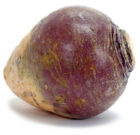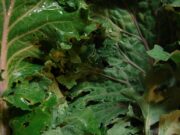Home / News Releases / 2019 / 0708 Tracing The Roots Mapping A Vegetable Family Tree For Better Food / Rutabaga
Related Media Gallery for Tracing the roots: Mapping a vegetable family tree for better food
July 8th, 2019
-

-
Hong An
In the new study, a team of multi-institution scientists led by Hong An at the University of Missouri challenged prior theories of the origins of three vegetables — canola, rutabaga and Siberian kale — by mapping the genetic family tree of these leafy greens. Photo:
Photo:
Download larger image
-

-
Mackenzie Mabry
“Domestication of plants — the process of adapting wild plants for human use — happened a long time ago before we knew about genetics,” said Makenzie Mabry, a doctoral student of biological sciences. Photo:
Photo:
Download larger image
-

-
J. Chris Pires
“Using an analogy, some of our human genetic history comes from both our mom and dad, but other parts only come from our mom,” said J. Chris Pires, a professor of biological sciences in the College of Arts and Science and investigator in the Christopher S. Bond Life Sciences Center. “Here we are trying to determine the parents of these plants, and we found that it’s not the previously hypothesized mom nor dad, it’s some yet to be identified species.” Photo:
Photo:
Download larger image
-

-
Rutabaga
In the new study, a team of multi-institution scientists led by the University of Missouri challenged prior theories of the origins of three vegetables — canola, rutabaga and Siberian kale — by mapping the genetic family tree of these leafy greens. Photo:
Photo:
Download larger image
-

-
Siberian kale
A team of multi-institution scientists led by the University of Missouri challenged prior theories of the origins of three vegetables — canola, rutabaga and Siberian kale — by mapping the genetic family tree of these leafy greens. Photo:
Photo:
Download larger image

